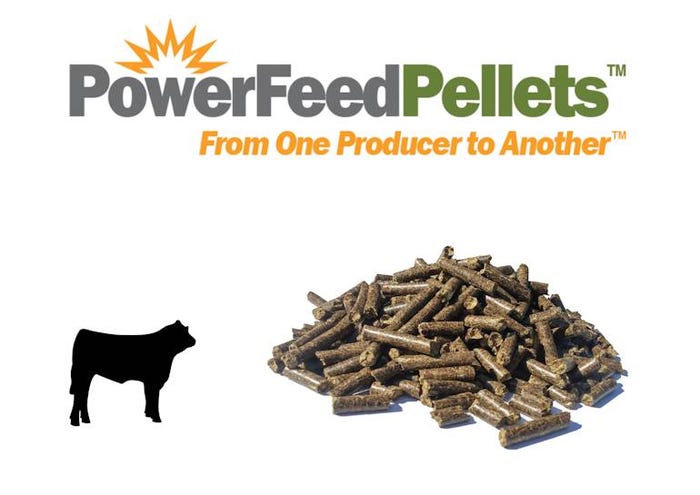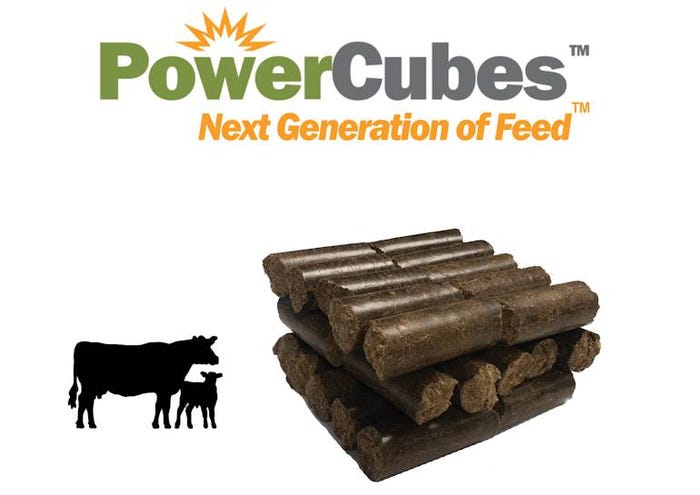
Pellet Technology USA has opened a $30 million plant in York, Neb., as the flagship of a series of plants that will be built in the Midwest to convert corn stover to animal feed.
Farmers like Brad Goossen in the York area have already turned residue to more than $6 million in new revenue through harvest agreements with the plant.
“I basically wanted to get rid of some residue and get paid for it,” said Goossen, who farms 900 acres of irrigated corn.
The plant began production in early December after buying 110,000 tons of stover. It’s being processed with ethanol plant distiller’s grain and syrup to make three kinds of feed pellets for beef cattle, said Joe Luna, business strategy manager.
The York plant employs 40 and has capacity to more than double production to 230,000 tons of stover processed per year, Luna said.
The processing will soon provide feed for dairy cattle, too, said founder and COO Russell Zeeck, noting that feed trials are underway at the USDA Forage Research Center in Madison, Wis., and Iowa State University. Plans include making pellets for swine and pets, he said.
Zeeck said an initial capital rollout will be five to seven more plants. The growth pattern depends on market factors. Wheat straw and other fibers could be processed with the same technology.
“Essentially, we’re targeting a plant a year starting in 2018,” Zeeck said.
An opportunity with cows
Zeeck, who has 30 years’ experience in renewable energy, was driving by fields of corn stover in Iowa a decade ago when he began mulling how to create value from what’s long been a cost center for farmers. He considered stover for combustion and cellulosic processing but then realized that Mother Nature provides the best cellulosic plant there is: ruminant animals.
He began Pellet Technology in 2008. In a modest research and development center in a rented building in Gretna, Neb., Zeeck, Luna and a small crew experimented with feed pellets. Zeeck holds multiple patents for the technology, which predigests stover for easier digestion by cattle.
“We’re seeing up to 10 percent less manure, higher energy intakes and better animal performance,” Zeeck said.
ICM, a world leader in biorefining, had visited the Gretna facility in 2012 and began collaborating. By 2014, a development agreement was reached with ICM for the construction and equipment fabrication that’s enabling the Midwest expansion. ICM now owns Pellet Technology.
Zeeck and colleagues come from agricultural backgrounds and share a core mission of feeding the world in a sustainable way that protects our soil, environment and food chain.
“We’ve had an intensive growth pattern but I’ve been fortunate enough to bring on like-minded staff, and I have business partners who also have that same value concept,” Zeeck said. “More importantly, I talk to producers every day who believe it. It makes my job easy when I can look a producer in the eye and we’re both able to understand our goals and agendas on the business moving forward.”
New revenue stream
The response from the farming community has been overwhelmingly positive, he said.
For Goossen, 57, the new revenue stream is helping pay for phosphorus. He was already low and then harvested half his stover, rather than disking it in, so he’s added more phosphorus.
There are two payment models under the harvest contracts. Goossen opts for the lower pay model because the company supplies harvesting. His 2016 stover harvest and checks paid this year are less than what he’d typically get because his yield was low due to bad weather. That reduced his stover tonnage.
Still, he’ll be paid roughly $24,000 for his 2016 harvest. He hopes that a better yield next season will bring $45,000 or more in silver for stover.
Luna said a farmer can enroll and be a supplier only, with Pellet Technology handling the harvest, for payments of $60 to $100 an acre. The second model, for farmers with balers who do all the work themselves, pays from $100 to $250 per acre.
Agco is currently doing most of the harvesting -- cutting stover to a certain height, windrowing, then baling it. The material is hauled to the plant, where patented Clean Feed Technology dehydrates and heats up the material to kill things like bugs, molds or mycotoxins, Luna said.
At least half the stover is left on fields, and there’s year-over-year rotations of pools of acres that are signed up. Agronomists are running studies, including long-term work to understand how this process can impact the soil.
“Soil is No. 1 to us,” Luna said.
The stover naturally has vitamins and nutrients, but beginning in March and April 2017, Pellet Technology is launching an upgrading process to fortify pellets with trace minerals and vitamins, such as manganese, copper and zinc, and perhaps yeast and probiotics.
Below is a review of the products available from the company. For more information, visit pellettechnologyusa.com.

ForageEQ - A 3/8-inch fiber product made of corn stover with an effective particle size and enhanced for digestibility.

PowerFeedPellets - A combination of stover, treated syrup and enhanced distiller’s grain, this comes in a 1/8-inch version for calves that is a bit softer and sweet. It also comes in a 1/4-inch pellet for use as a ration enhancer.

PowerCubes - Research shows that aggressive cattle will push ahead if you throw down distiller’s grain, with passive cattle not getting their fill. This 7/8 cube product has a little less protein than distiller’s grain but a good amount of fat and fiber to help ensure your entire herd is fed in a more consistent way.
About the Author(s)
You May Also Like






